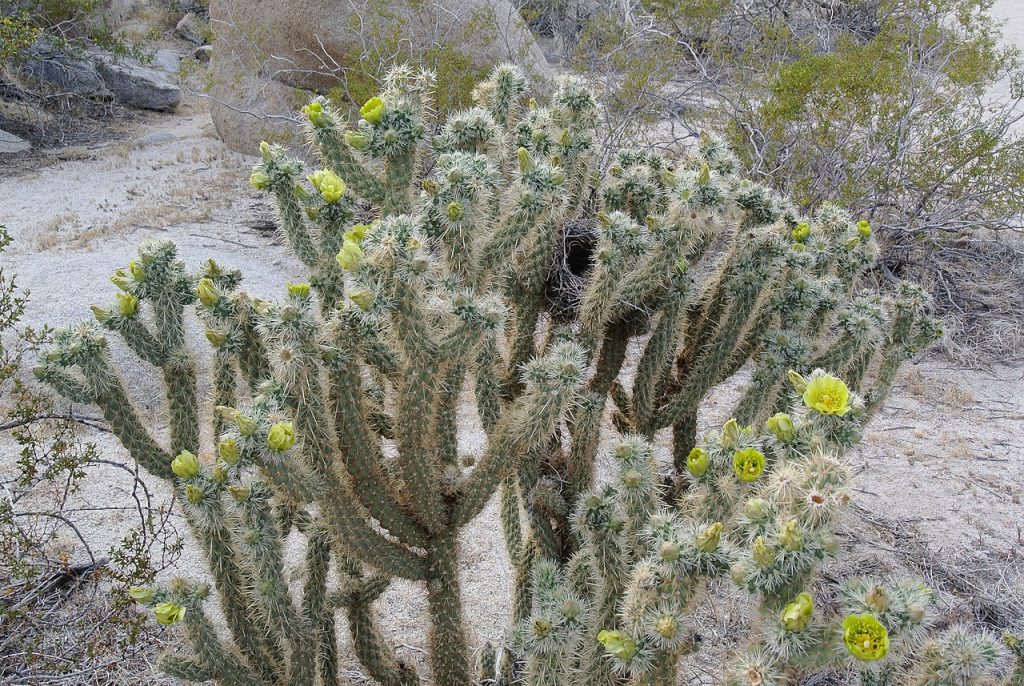
Native to hot desert areas of northwestern Mexico, California, Arizona, and Nevada, the teddy bear cholla is a shrub or small tree in the cactus family, Cactaceae, and closely related to prickly pears. The plants grow up to 8′ tall and have a stout, upright trunk with many jointed branches 2-10″ long. The lower branches fall off leaving a tree like plant. The trunk and branches are green and densely covered with silvery white spines up to 1″ long and covered with a detachable, paper-like sheath. The spines create a soft fuzzy appearance resembling teddy-bear’s arms that belies their danger to passers-by. In spring and summer, yellow-green flowers appear at the tips of the stems. They are up to 1.5″ across, sometimes red-tipped, and give way to fruits that contains few viable seeds. Reproduction is by the rooting of stems that drop to the ground as the plant matures. Pack rats use the detached stems as a defense around their burrows. Teddy bear cholla does well in a xeriscape and is a popular choice for cactus, desert, rock, and Mediterranean gardens. The genus name, Cylindropuntia, comes from Greek words kylindros, meaning cylinder, referring to the form of the stems, and Opus, the name of an ancient Greek city used as the genus name for a different plant. The specific epithet, bigelovii, honors American botanist John Milton Bigelow (1804 – 1878).
Type: Shrub or small tree
Outstanding Feature: Soft appearance; drought tolerance
Form: Upright, branched
Growth Rate: Slow
Bloom: Yellow-green flowers sometimes tipped with red in spring to summer
Size: 1-8′ H x 1-8′ W
Light: Full sun
Soil: Lean, dry, very well-drained
Hardiness: Zones 9-11
Care: Low maintainance
Pests and Diseases: None of significance but root rot a problem in poorly drained soil
Propagation: Rooting of detached joints
Outstanding Selections: None available
Photo Credit: Adbar Wikipedia